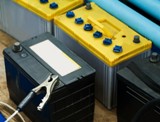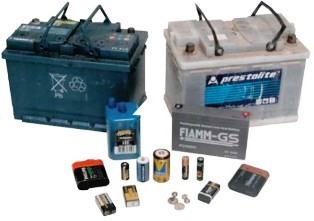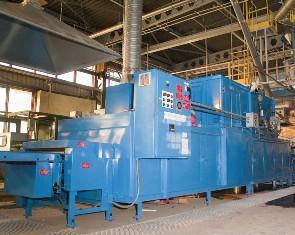How many old batteries are thrown away
 The rechargeable battery performs its functions until the end of its life and must then be disposed of. Disposing of a battery in a landfill will cause significant damage to the environment. Its design includes plastic, lead and electrolyte, and they are far from safe components. Their release into the environment causes irreparable damage, pollutes the soil, water and air.
The rechargeable battery performs its functions until the end of its life and must then be disposed of. Disposing of a battery in a landfill will cause significant damage to the environment. Its design includes plastic, lead and electrolyte, and they are far from safe components. Their release into the environment causes irreparable damage, pollutes the soil, water and air.
The number of used batteries is growing exponentially and their disposal is the most important task for environmental protection. It is worth noting that recycling old batteries is a very expensive and complicated process, but in the end it is profitable. Recycling used batteries allows you to get lead and plastic again from which you can create new batteries. Only the electrolyte cannot be reused.
The safe disposal of old batteries is carried out by specialized companies, where on special factory lines.

There are several technologies for this process, but they have the same essence: the first step is draining the electrolyte, which is neutralized in special sealed chambers at high temperatures to a safe state.
The next stage is crushing the battery case. This happens on a special conveyor, where with the help of powerful crushing machines the battery is completely destroyed. As a result of this process, a lead-acid or lead-alkaline paste is formed, which is separated through filters located immediately after the crushers.
This paste is settled on mesh filters and sent to the metallurgy for further processing. The pieces of plastic and metal left after crushing are fed into containers where they are mixed with water, causing the heavy lead to settle to the bottom and the plastic to float to the surface. In this way, there is a separation of non-metallic components from metallic ones.
Pieces of plastic are collected from the surface of the water and then recycled for secondary raw materials, which will later be made into plastic granules. This process can be carried out directly in the enterprise that disposes of batteries, or the raw materials are sent to other factories for the production of plastic granules.
The metal mass settled at the bottom is subject to further processing together with the paste removed from the mesh filters. Since a certain amount of acid is observed in water with metal mass, it must be neutralized. To do this, special chemicals are added to the mixture of water and pieces of metal that neutralize the acid.As a result of this process, the sediment falls to the bottom, it is removed and the water is passed through a filter system and discharged into the sewer or reused in the production cycle.
The mixture of pieces of metal and metal paste must be freed from moisture, so all components are sent to the furnace, from where the raw material comes out ready for melting. Lead in a melting metal mixture has the highest density. It also melts much faster, so molten lead forms in the furnace, on the surface of which are concentrated pieces of other metals that must be removed.
After the molten lead is separated from other metals, it is sent to the crucible where it is mixed with caustic soda. This component helps to free the molten lead from any impurities. They are removed from the melt and the lead becomes moldable.
When lead is poured into molds, a thin film forms on the surface of the remaining impurities, which can eventually be easily removed. Lead is now of high enough purity that it can be used to make a variety of parts, including grids for new batteries.
All of the above processes are fully automated, allowing for quick and efficient disposal of the batteries, thus preventing environmental pollution.

